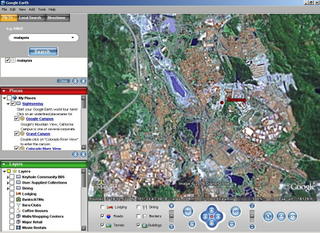GPS and GIS... whats it all about... can it work in Malaysia?? GIS Maps?? Part 3
So… can we say that GPS is the best way to obtain accurate survey or positional readings on the earth’s surface. Not yet… hold on... there are other factors that govern accuracy of the GPS readings that can alter exact readings.
- Ionosphere and troposphere delays : as you know any wave signal… radio or even microwave faces friction from the atmosphere… the satellite signal can slow or even fade as it reaches the GPS equipment. For this… there are built in components within a GPS unit that calculates the average amount of delay… and it partially corrects the errors.
- Signal multipath: GPS signals can also be reflected off objects as its reaching the GPS receiver…. Tall buildings or large rocks can deflect the signal and this will cause the travel time of the signal to be delayed. As you know this will then cause errors when calculating the distances from satellite position (see Part 2).
- GPS Receiver clock errors : the GPS satellites use atomic clocks … this is different from the GPS receiver’s built in clocks. There will be slight timing errors between both the satellite and the receiver clocks.
- Orbital errors : Since the satellites are thousands of miles away from earths surface… there could be inaccurate readings of the exact satellite’s reported location. This is called ephemeris errors.
- Number of satellites visible : From Part 2…. You can understand that GPS receivers need a minimum of 3 satellites to get positional value. The more satellites that the GPS receiver can detect…. the better accuracy. There are many factors that can block these signals… called interference. This can include… dense trees, buildings, electronic interference,,,, this can cause serious positional errors. GPS units will not work indoors, underwater or underground.
- Selective Availability (SA) : The US Department of defense sometimes adds errors to the signal… this is to prevent its enemies from using the same GPS signals. During the Irag Gulf war… they imposed SA on the satellites.
So now you can see there are a number of errors that can cause GPS readings and calculations to be distorted.
Leonardo Da Vinci
I cannot stop admiring the works from this dude. I did mention about him in previous blogs. He potrays so much more than a pretty picture when he paints... his works tell a story, twisted at times... and the longer you stare at them.. the more depth you can get from his subjects. Very similar to Rembrandt, his techniques are so fine and exquisite... both are master storytellers...










